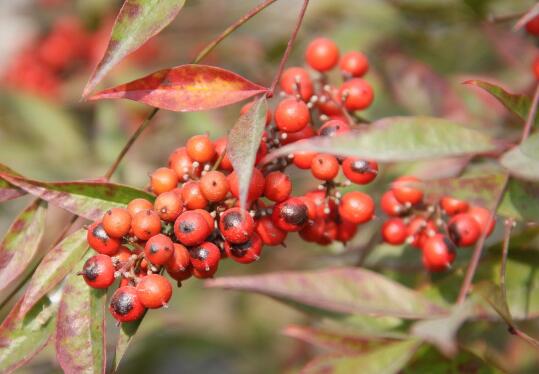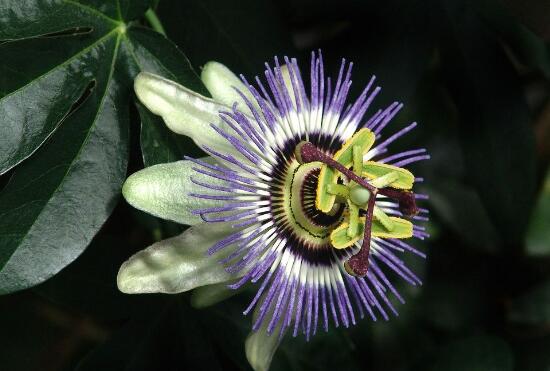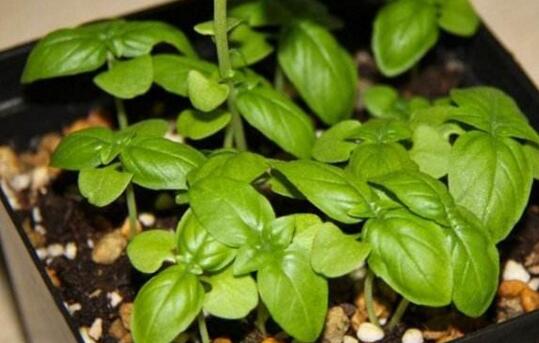What about the growing insects of Phyllostachys pubescens? pest control of Phyllostachys pubescens / 2 pests 2 diseases
In the process of cultivating Phyllostachys pubescens, the last thing we want to encounter is the problem of diseases and insect pests, which do great harm to the plant, and it is easy to make the plant die if we don't deal with it in time. So what about the bamboo worm in Nantian? How to control the diseases and insect pests of Phyllostachys pubescens?
First, what to do with the bamboo worms? find the reason.

2. Pest control of Phyllostachys pubescens (pest)
1. Aphids
Aphid is a plant-eating insect, which does great harm to Phyllostachys pubescens. It mainly absorbs the juice from the leaves of Phyllostachys pubescens, which leads to the gradual chlorosis of the leaves. In serious cases, it will also cause the leaves to shrink and fall off, and affect its flowering.
Control method: in the control of this kind of Phyllostachys pubescens diseases and insect pests, we can use 3000 times of aldicarb wettable powder to spray it, generally spraying 2-3 times in a row can kill this pest.
two。 Shell worm
Scale insect is a kind of pest with high incidence in the growth process of Phyllostachys pubescens, which mainly threatens the leaves, branches and fruits of Phyllostachys pubescens, resulting in its leaves gradually yellowing and falling off, and finally the whole plant will gradually wither.
Control methods: in the control of diseases and insect pests of Phyllostachys pubescens, we can use 1000 times liquid of imidophos to spray and kill it, and the treatment must be timely, if the time is prolonged, it will do great harm to the plant.
3. Disease and pest control of Phyllostachys pubescens (disease)
1. Redspots
Red spot disease is very harmful to Phyllostachys pubescens. At the initial stage of the disease, many brown spots will appear on its leaves, and there will be a faint redness on the outer edge of the disease spot, and clusters of coal-like lumps will grow at the disease spot over time, resulting in the gradual death of the plant.
Control methods: in the control of diseases and insect pests of Phyllostachys pubescens, we can use methyl topiramate wettable powder to spray the plant, usually once every 10-15 days, and then recover after 2-3 times.
two。 Anthrax
Anthracnose is a major threat to the leaves of Phyllostachys pubescens, many brown spots will appear on the leaves at the initial stage of the disease, and with the passage of time, the spots will gradually expand and occupy the general area of the leaflets, so that the plants can not carry out photosynthesis and gradually wither and yellow, and the leaves will gradually fall off.
Control method: when controlling the diseases and insect pests of Phyllostachys pubescens, we can use 1000 times of methyl topiramate wettable powder to spray the diseased plants, which is usually sprayed once every 7-10 days, and can be cured 2-3 times.
Conclusion: after reading the above, I believe you all have a certain understanding of the problems of pest control of Phyllostachys pubescens. In fact, this kind of problem is mainly caused by improper conservation. You can take a look at the breeding methods and matters needing attention of Phyllostachys pubescens when you have time, in which there is correct maintenance teaching. Here, the editor will not introduce too much.
What should we do if brown bamboo grows insects? control of diseases and insect pests of brown bamboo / 2 insect pests 2 diseases
In the process of cultivating brown bamboo, the last thing we want to encounter is the problems of diseases and insect pests, which do great harm to it, not only affect the ornamental, but also lead to its death. So what should I do if the brown bamboo grows bugs? What should be done to prevent and control diseases and insect pests of brown bamboo? Next, the editor will take you to learn about it.
First, what to do when brown bamboo worms grow? find the reason.
If you want to know what to do with brown bamboo insects, we must first understand what kind of insects grow, so that we can deal with them pertinently, because the control methods of each kind of diseases and insect pests are different. Details are described below, let's take a look at it.
II. Disease and pest control of brown bamboo (pest)
1. Aphids
Aphids are one of the most common diseases and insect pests of brown bamboo, and it is also a kind of pest that exists in many plants. it is a plant-eating insect, which mainly harms the leaves and stems of brown bamboo, and it will gradually absorb the juice. as a result, a large amount of nutrients are lost in the plant, and it will cause the plant to wither and die gradually with the passage of time.
Control method: if the number of this pest is small, we can prune the damaged branches and disinfect the plants. If the quantity is large, we can directly use 3000 times of 50% aldicarb wettable powder to spray.
two。 Shell worm
Scale insect is a kind of pest that occurs in the growth process of many plants, and brown bamboo is no exception. this pest mainly feeds on the sap in the leaves and stems of brown bamboo, and it gradually absorbs the sap, which leads to the gradual loss of nutrients of brown bamboo and finally shrinks.
Control method: for this kind of brown bamboo diseases and insect pests, we can use 1500 times of 50% malathion to spray and kill it.
III. Disease and pest control of brown bamboo (disease)
1. Rotten bud disease
The disease mainly threatened the young buds and young leaves of brown bamboo. At the beginning of the disease, the undeveloped leaves withered first, brown, and then drooped. The pathogen will expand from the base of the tender leaves to the young tissue of the bud, causing the bud to die and rot, the plant to stop growing and, in severe cases, the whole plant to die.
Control method: when dealing with this brown bamboo pest, we can use 80% mancozeb wettable powder 500 times to spray the diseased plant, usually once every 10 days, 3-4 times can be cured.
two。 Anthrax
Anthracnose is a disease that mainly threatens the leaves of brown bamboo. When the disease occurs, many semicircular spots appear on the tip or edge of the leaves, showing yellowish brown or grayish brown. When the air is too humid, there will be liquid spots the size of scarlet needles on the leaves. It will cause the plant to die gradually over time.
Control methods: for this kind of brown bamboo diseases and insect pests, we can use Guoguang Yintai wettable powder 600-800 times to spray it, generally spray once every 7-10 days, 2-3 times can be cured.
What if there are insects in water bamboo? disease and pest control of water bamboo / 2 insect pests and 2 diseases
In the growth process of Phyllostachys pubescens, the last problem we want to encounter is diseases and insect pests, this kind of problem is very harmful to the plant, not only affect the ornamental, but also lead to its death. So what should we do if the water bamboo grows worms? How to prevent and control diseases and insect pests of Phyllostachys pubescens? Next, the editor will take you to learn about it.
First, what if the water bamboo grows worms? find the reason.
With regard to the growth of water bamboo insects, first of all, we need to know what kind of insects have grown, so that we can deal with them pertinently. Because there are many diseases and insect pests of Phyllostachys pubescens, and each kind of control method is different. In the following, there are all kinds of pest control methods, you can learn about it.
II. Pest control of Phyllostachys pubescens (pest)
1. Red spider
Red spider is a pest that exists in many plants, and water bamboo is no exception. The size of this pest is very small and is generally difficult to find. The harmful way is to pierce the mouthparts into the leaves to suck the juice, which leads to the destruction of chlorophyll and yellowing, and in serious cases, it will cause the leaves to fall off or even lose light.
Control method: when dealing with the diseases and insect pests of this kind of Phyllostachys pubescens, if only individual leaves are injured, we can remove them, and if more leaves are damaged, we can use 1500 times of dimethoate EC to spray the plants. to kill the pest at once.
two。 Bamboo borer
Bamboo borer is a kind of pest of Lepidoptera, which mainly feeds on the leaves of Phyllostachys pubescens, which will gnaw on the leaves, resulting in holes in the leaves, which will affect the beauty of the leaves, and with the passage of time, the bamboo leaves will be eaten up gradually, which will seriously affect its yield.
Control method: for this kind of water bamboo diseases and insect pests, we can use 90% trichlorfon 400 times liquid or phoxim 400 times solution to directly spray it.
3. Pest control of Phyllostachys pubescens (disease)
1. Leaf blight
Leaf blight is a common disease of Phyllostachys pubescens, which mainly threatens its leaf edge, leaf tip and other places. At the time of the disease, there will be many irregular disease spots on the leaves, and will gradually spread with the passage of time, and finally lead to the phenomenon of plant death.
Control method: when we deal with the disease of leaf blight, we can use 1000 times of topiramate to spray the plant, usually once every 10 days, and can be cured after 1-2 times.
two。 Rust disease
Rust is a kind of plant disease caused by the parasitism of rust fungi, which mainly harms the leaves, stems and fruits of Phyllostachys pubescens. During the onset of the disease, there will be many blister spots in the affected area, and in severe cases, the blister spots will be dense into pieces, so that the plant will die quickly due to the evaporation of a large amount of water in the body.
Control method: for this disease, we can spray the plant with 1500-2000 times of trimethoprim or 3000 times of oxidizing rustling, which is usually sprayed once every 7-12 days, and can be cured after 2-3 times.
- Prev

How to propagate passionflower? three propagation methods / cutting survival rate of passionflower is 85%.
Passionflower, we should be no stranger, it is also called passion fruit, is a very powerful plant. Nowadays, passionflower is widely cultivated all over the world, not only because of its peculiar flower shape, but also because of its rich nutritional value and edible taste, so how does passionflower reproduce?
- Next

Basil pest control methods, 4 pests 1 disease control/prevention is the key
Basil leaves are wide and wrinkled. Although the edible and medicinal value is very high, they will also become the target of pests and diseases. Therefore, we need to understand the basil pest control methods when planting, so that we can take correct control measures in time when basil has long insects or disease spots.
Related
- Fuxing push coffee new agricultural production and marketing class: lack of small-scale processing plants
- Jujube rice field leisure farm deep ploughing Yilan for five years to create a space for organic food and play
- Nongyu Farm-A trial of organic papaya for brave women with advanced technology
- Four points for attention in the prevention and control of diseases and insect pests of edible fungi
- How to add nutrient solution to Edible Fungi
- Is there any good way to control edible fungus mites?
- Open Inoculation Technology of Edible Fungi
- Is there any clever way to use fertilizer for edible fungus in winter?
- What agents are used to kill the pathogens of edible fungi in the mushroom shed?
- Rapid drying of Edible Fungi

